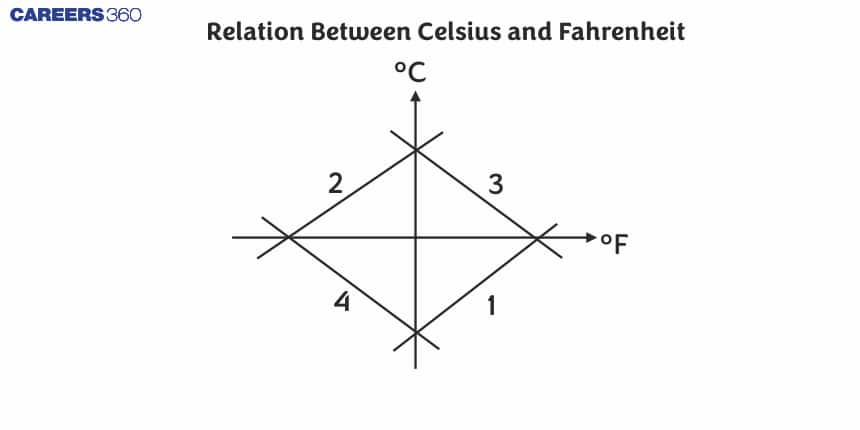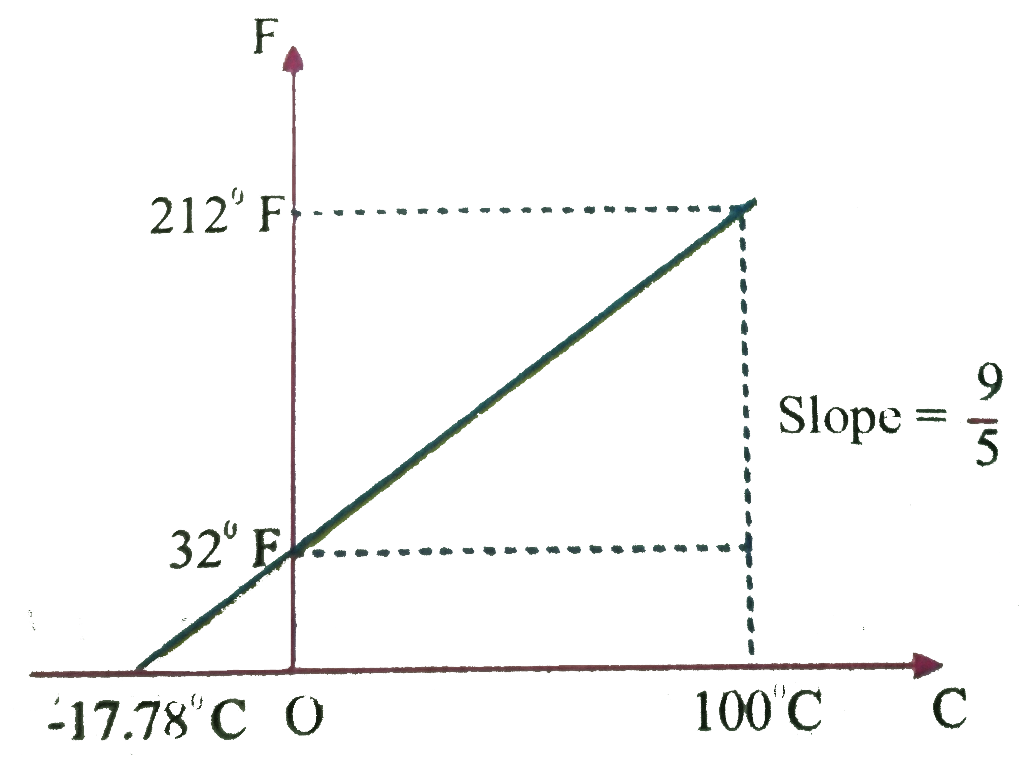Relation Between Celsius and Fahrenheit - Detailed Guide
In this article, we are going to study about the relationship between celsius and fahrenheit, how to convert 1 degree celsius to fahrenheit and vice versa , what is fahrenheit scale , what is celsius scale , how to convert 0 degree fahrenheit to celsius , 0 celsius to fahrenheit ( 0 c to f ) .
During this we will also have a glance at , what is centigrade , fahrenheit definition , celsius to fahreheit formula derivation , and celsius and fahrenheit thermometer.
So let’s start our discussion one by one .
Relationship between celsius and fahrenheit/ relationship between celcius and farenheit/ relation between degree celsius and fahrenheit
The conversion formula for a temperature that is expressed on the Centigrade scale ( C ) to its Fahrenheit scale ( F ) representation is or the relationship between Celsius and Fahrenheit scale is:
F = 9 / 5 C + 32.
Celsius temperature scale is also known as centigrade temperature scale , it is the scale based on 0 for the freezing point of water and 100 for the boiling point of water.
Also read -
- NCERT Solutions for Class 11 Physics
- NCERT Solutions for Class 12 Physics
- NCERT Solutions for All Subjects
- Relationship between celsius and fahrenheit/ relationship between celcius and farenheit/ relation between degree celsius and fahrenheit
- Relationship between celsius and fahrenheit
- Difference between celsius and fahrenheit

What is centigrade ?
Celsius is also called a centigrade. It is also the unit of temperature. It is based on 0° for the freezing point of water and 100° for the boiling point of water. The formula used to convert the temperature from the Fahrenheit ( °F ) scale to the Celsius ( °C ) value is :
°C = 5/9(°F − 32).
The Celsius scale is used generally when the metric system of units is used , also it has wide use in science field everywhere.
Also read :
- NCERT notes Class 11 Physics Chapter 11 Thermal Properties of Matter
- NCERT solutions for Class 11 Physics Chapter 11 Thermal Properties of Matter
- NCERT exemplar class 11 physics solutions chapter 11 Thermal Properties of Matter
Definition of fahrenheit or what is fahrenheit scale ?
Fahrenheit is a scale used for measuring temperature degree, in which water freeze down at 32 degrees and boils at 212 degrees. It is represented by the symbol °F. It was invented by physicist Daniel Gabriel Fahrenheit in the year 1724.
The given formula can be used to convert degree Celsius to it’s Fahrenheit :
°F = ( 9/5 x °C ) + 32 .
Fahrenheit is widely used in the United States by the National Weather Service of the US.
Celsius to fahreheit formula derivation
Derivation of relation between Celsius and Fahrenheit.
By examining for similarity, the number of degrees from the freezing point of water to water’s boiling point on Celsius and Fahrenheit scale to find out the ratio and add in the dissimilarity between the freezing points.
The Fahrenheit freezing point of water is 32∘ F and water’s boiling point is 212∘ F.
212 ∘F−32 ∘F = 180 ∘F
between the freezing point and boiling point of water.
The Celsius freezing point of water is 0 ∘C and water’s boiling point is 100 ∘C.
100 ∘C – 0 ∘C = 100∘C between water's freezing and boiling points.
Hence, results in a relationship between Celsius to Fahrenheit of 100180 or 59, and
hence, results in a relationship between Fahrenheit to Celsius of 180100 or 95.
We got,
32∘F = 0∘C , therefore
The formula for ∘C to ∘F is
(∘C × 9/5) + 32 = ∘F
Related Topics Link, |
Relationship between celsius and fahrenheit
Celsius and fahrenheit scale is formulated as:
°C = 5/9 (°F − 32)
Similarly, we found relation between fahrenheit scale and celsius scale (convert farahenheit to celsius )
°F = ( 9/5 x °C ) + 32
Difference between celsius and fahrenheit
Celsius scale
- Celsius is the scale of temperature in which 0 o C represents the melting point of ice while 100 o C represents the boiling point of water.
- The absolute zero in the Celsius scale is 273.15 o C.
Fahrenheit scale
- Fahrenheit is a scale of temperature in which 32 o F represents the melting point of water.
- The absolute zero in Fahrenheit is - 459.67 o C
Also, now we can draw a celsius vs fahrenheit graph

Celsius vs fahrenheit graph
NCERT Physics Notes:
How to convert 0 degree fahrenheit to celsius and 0 celsius to fahrenheit ( 0 c to f ) .
The formula used convert 0 degree Fahrenheit to Celsius on and zero degree Celsius to Fahrenheit is given as follows
°C = 5/9 (°F − 32) . . . . 1
°F = ( 9/5 x °C ) + 32 . . . . 2
0 degree Celsius is equal to 32 degrees Fahrenheit from eq 1.
0 degree Fahrenheit is equal to -17.778 degrees Celsius from eq 2.
Hence through this article we all have now an exact idea of the relationship between celsius and fahrenheit , how to convert 1 degree celsius to fahrenheit and vice versa , what is fahrenheit scale , what is celsius scale , how to convert 0 degree fahrenheit to celsius , 0 celsius to fahrenheit ( 0 c to f ) , what is centigrade , fahrenheit definition , celsius to fahrenheit formula derivation , and celsius and fahrenheit thermometer.
Also check-
Frequently Asked Questions (FAQs)
It is 33.8 degrees Fahrenheit in 1 degree Celsius.
Celsius thermometer is used to determine the temperature of substances like water or any solution ghost properties varies with this temperature whereas Fahrenheit thermometer is used to determine the temperature of a body . The boiling point of water is set on a Celsius scale that is 100 degrees Celsius whereas the normal body temperature in Fahrenheit is 37 degrees Fahrenheit . Though both scales can be used two major both types of quantities .
There are three types of temperature scales used to determine the temperature of any object
Kelvin (K) , Celsius (C) and Fahrenheit(F)
Relation between Kelvin and Celsius is
K=C+273
Relation between Celsius and Fahrenheit is
F = 9/5(C) + 32
Relation between different temperature scales is
C/5 = (F-32)/9 = (K+273)/5
No, there is no relationship between temperature and time. Many physical phenomena can be slowed by decrease in temperature.
1 degrees= 33.8 Fahrenheit
0 Fahrenheit= -17.778 Celsius
Also Read
02 Jul'25 07:03 PM
02 Jul'25 05:33 PM
02 Jul'25 05:08 PM
02 Jul'25 05:07 PM
02 Jul'25 05:04 PM
02 Jul'25 05:04 PM
02 Jul'25 05:00 PM
02 Jul'25 05:00 PM
02 Jul'25 05:00 PM
02 Jul'25 04:58 PM


